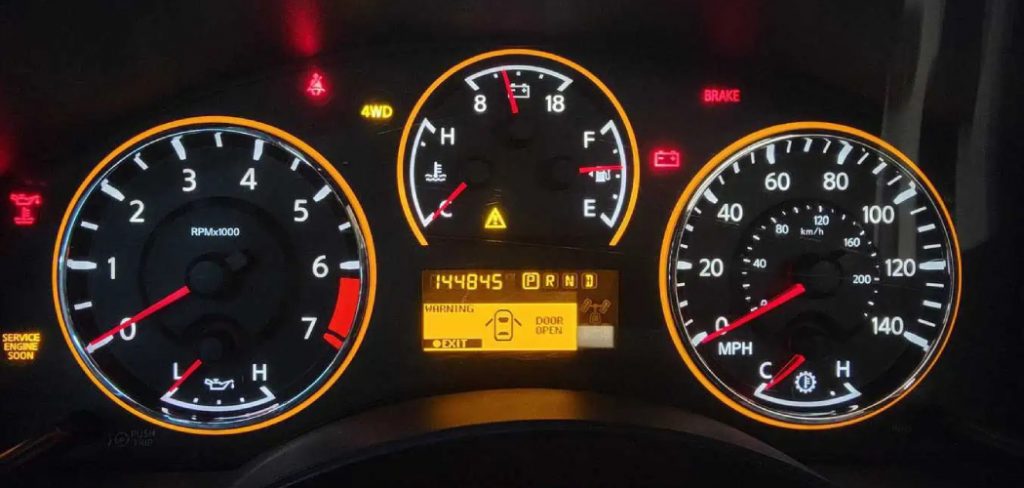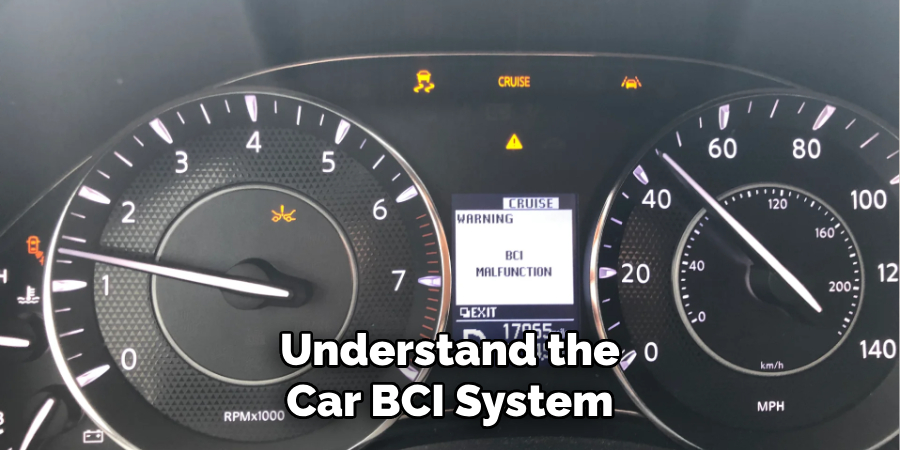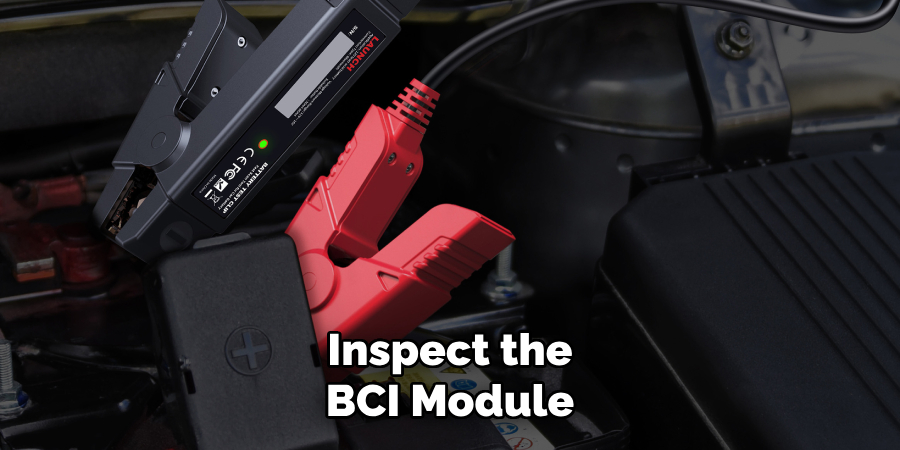If you own a Nissan Armada, one issue you might encounter is a BCI (Blind Spot Intervention) malfunction.

This advanced safety feature is designed to enhance driving safety by monitoring your vehicle’s blind spots and assisting in collision prevention. A malfunction in the system, however, can lead to inaccurate alerts or a complete failure of the feature, which can diminish the safety and driving experience.
This guide will walk you through how to fix bci malfunction nissan armada, ensuring your vehicle’s safety features work as intended.
What is the BCI (Backup Collision Intervention) System?
The Backup Collision Intervention (BCI) system is a critical safety feature integrated into the Nissan Armada to enhance driver awareness and vehicle safety. This system works by detecting potential obstacles or vehicles behind the car when reversing.
Using sensors and cameras, the BCI system alerts the driver to any impending collisions through visual and auditory warnings.
Moreover, if the driver does not respond promptly, the system can automatically apply the brakes to prevent or mitigate a collision.
The BCI system operates as part of Nissan’s comprehensive suite of intelligent driving technologies, aiming to provide peace of mind and added protection for drivers and passengers alike.
Why Addressing This Issue is Important
Addressing a BCI malfunction in your Nissan Armada is crucial because it directly affects the safety and efficacy of driving.
The BCI system is designed to prevent collisions while reversing, which can significantly reduce the risk of accidents that may lead to injury or property damage. A malfunctioning system could result in false alerts or, worse, fail to detect obstacles altogether, leaving you vulnerable to potential hazards.
Additionally, a properly functioning BCI system plays a vital role in maintaining the car’s overall safety integrity, ensuring that advanced safety technologies work cohesively to protect drivers, passengers, and pedestrians.
By resolving any issues promptly, you maintain the reliability of these systems and ensure peace of mind on the road.
10 Methods How to Fix Bci Malfunction Nissan Armada
1. Understand the BCI System in the Nissan Armada

The Body Control Interface (BCI) system in your Nissan Armada is a critical component responsible for controlling various electrical systems, including lighting, locks, and security features.
A BCI malfunction can manifest in various ways, such as flickering lights, non-responsive locks, or failure of security systems, often leading to frustration for the driver.
Understanding how the BCI functions is essential for diagnosing the issue effectively. The BCI acts as a communication hub, linking various modules within the vehicle to ensure they operate harmoniously.
This interconnectedness means that a malfunction in the BCI can result in multiple systems exhibiting problems, requiring a thorough investigation.
2. Check for Diagnostic Trouble Codes (DTCs)
The first step in diagnosing a BCI malfunction is to check for Diagnostic Trouble Codes (DTCs) using an OBD-II scanner.
This tool connects to your vehicle’s onboard computer, providing valuable insight into any issues that may be affecting the BCI or related systems. Start by locating the OBD-II port, typically found under the dashboard near the steering column.
Once connected, run a scan to identify any trouble codes. Common codes related to the BCI may indicate communication issues or faults within the system.
Make a note of these codes, as they will guide your troubleshooting process and help you pinpoint the specific issue causing the malfunction.
3. Inspect the Vehicle’s Battery and Connections
A weak or failing battery can significantly impact the BCI’s performance. Begin your diagnosis by inspecting the battery and its connections. Look for any signs of corrosion on the terminals, which can impede electrical flow.
Ensure that the battery cables are securely connected and free from damage. If you suspect the battery may be weak, test it with a multimeter.
A healthy battery should read around 12.6 volts when the engine is off and 13.7 to 14.7 volts when the engine is running. If the battery is below these readings, consider replacing it, as a faulty battery can cause a cascade of electrical issues, including BCI malfunctions.
4. Check Fuses and Relays Related to the BCI

Another common source of BCI malfunctions is blown fuses or faulty relays. The BCI relies on several fuses to operate various systems effectively. Refer to your owner’s manual to locate the fuse box and identify the fuses associated with the BCI.
Inspect each fuse visually; a blown fuse will typically have a broken wire inside or may appear discolored. Replace any blown fuses with new ones of the same amperage. Additionally, check the relays linked to the BCI for proper operation.
If a relay is malfunctioning, it can disrupt the electrical flow, leading to issues with the BCI and its connected systems.
5. Examine Wiring and Connectors for Damage
Wiring issues can also lead to BCI malfunctions, often caused by frayed wires, loose connections, or corrosion.
Conduct a thorough visual inspection of the wiring harnesses connected to the BCI and its related components. Pay special attention to areas where wires may rub against sharp edges or components, as this can lead to wear and eventual failure.
If you notice any damaged wiring or connectors, repair or replace them as necessary.
Ensuring that all connections are tight and secure is crucial, as poor electrical connections can lead to intermittent problems that mimic BCI malfunctions.
6. Reset the BCI System
Sometimes, resetting the BCI system can resolve temporary glitches or communication errors. To perform a reset, disconnect the vehicle’s battery by removing the negative terminal first, followed by the positive terminal.
Leave the battery disconnected for about 15 minutes to allow any residual electrical charge to dissipate. After this time, reconnect the battery, starting with the positive terminal, followed by the negative.
This reset can clear any temporary faults within the BCI and may resolve the malfunction. After reconnecting, start the vehicle and check to see if the BCI warning has cleared.
7. Reprogram the BCI Module
If the issue persists after a reset, reprogramming the BCI module may be necessary. This process typically requires specialized diagnostic equipment, which can be found at most Nissan dealerships or authorized repair shops.
Reprogramming may resolve any underlying software issues or restore lost configurations within the BCI. If you have access to an advanced OBD-II scanner that supports module programming, follow the device’s instructions to reprogram the BCI.
Ensure that your vehicle’s battery is fully charged during this process to prevent interruptions, which can lead to further complications.
8. Inspect and Replace the BCI Module if Necessary

In some cases, the BCI module itself may be faulty and require replacement. If all previous troubleshooting steps have failed to resolve the malfunction, consider inspecting the BCI module for any signs of damage or internal failure.
Look for burnt circuit boards, damaged connectors, or any signs of corrosion. If you determine that the module is faulty, you will need to replace it with a new or refurbished unit.
When replacing the BCI module, ensure that it is compatible with your Nissan Armada’s specific model year and specifications. After installation, reprogram the new module to ensure proper functionality.
9. Test All Related Systems After Repairs
Once you have completed your repairs or replacements, it is essential to test all systems controlled by the BCI. This includes checking the functionality of the lights, locks, security features, and any other systems affected by the BCI.
Start the vehicle and operate each feature, noting any irregularities or malfunctions. If everything operates as expected, it indicates that the issue has been successfully resolved.
However, if any problems persist, you may need to conduct further diagnostics or consult with a professional mechanic to identify the root cause.
10. Consult a Professional Mechanic for Persistent Issues
If you have diligently followed all troubleshooting steps and the BCI malfunction persists, it may be time to consult a professional mechanic. Some issues may be more complex than they appear, requiring specialized knowledge or equipment to diagnose effectively.
A professional technician will have access to advanced diagnostic tools that can provide deeper insights into the vehicle’s electronic systems. They can also conduct thorough inspections and tests to identify any hidden problems that may be affecting the BCI.
Ultimately, seeking expert assistance can save you time and prevent further complications, ensuring that your Nissan Armada is safe and fully operational.

Conclusion
Addressing a BCI malfunction in your Nissan Armada can be a complex process, but taking a systematic approach to troubleshoot each potential cause can lead to a successful resolution. Begin by inspecting the battery and related electrical components, then move on to check fuses, relays, wiring, and connectors.
A reset or reprogramming of the BCI system might be necessary in some cases, and if all else fails, replacing the BCI module could be the final step. Always ensure that you test all related systems post-repair to confirm proper operation.
If you encounter persistent issues despite following these steps, consulting a professional mechanic is advisable to prevent further complications. Thanks for reading, and we hope this has given you some inspiration on how to fix bci malfunction nissan armada!
